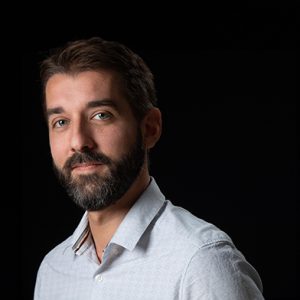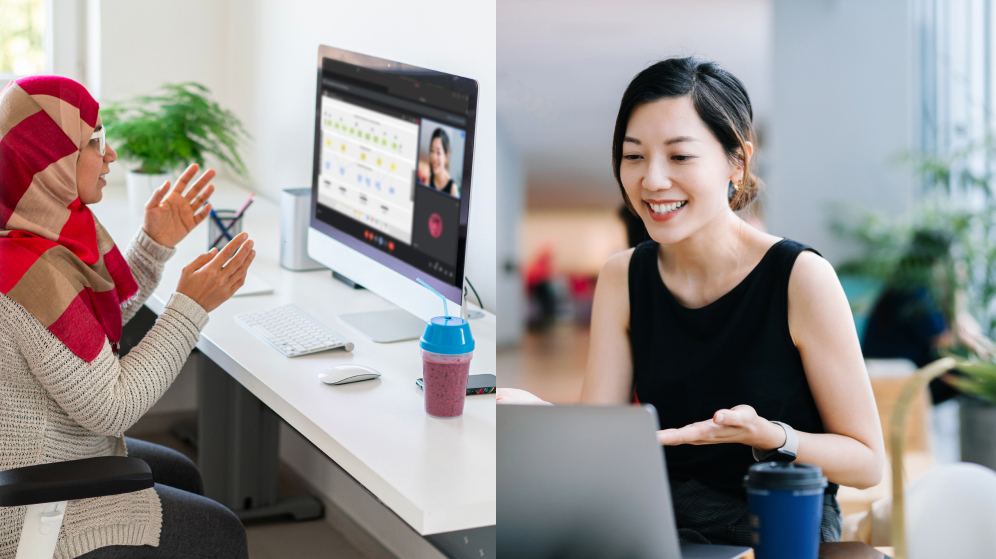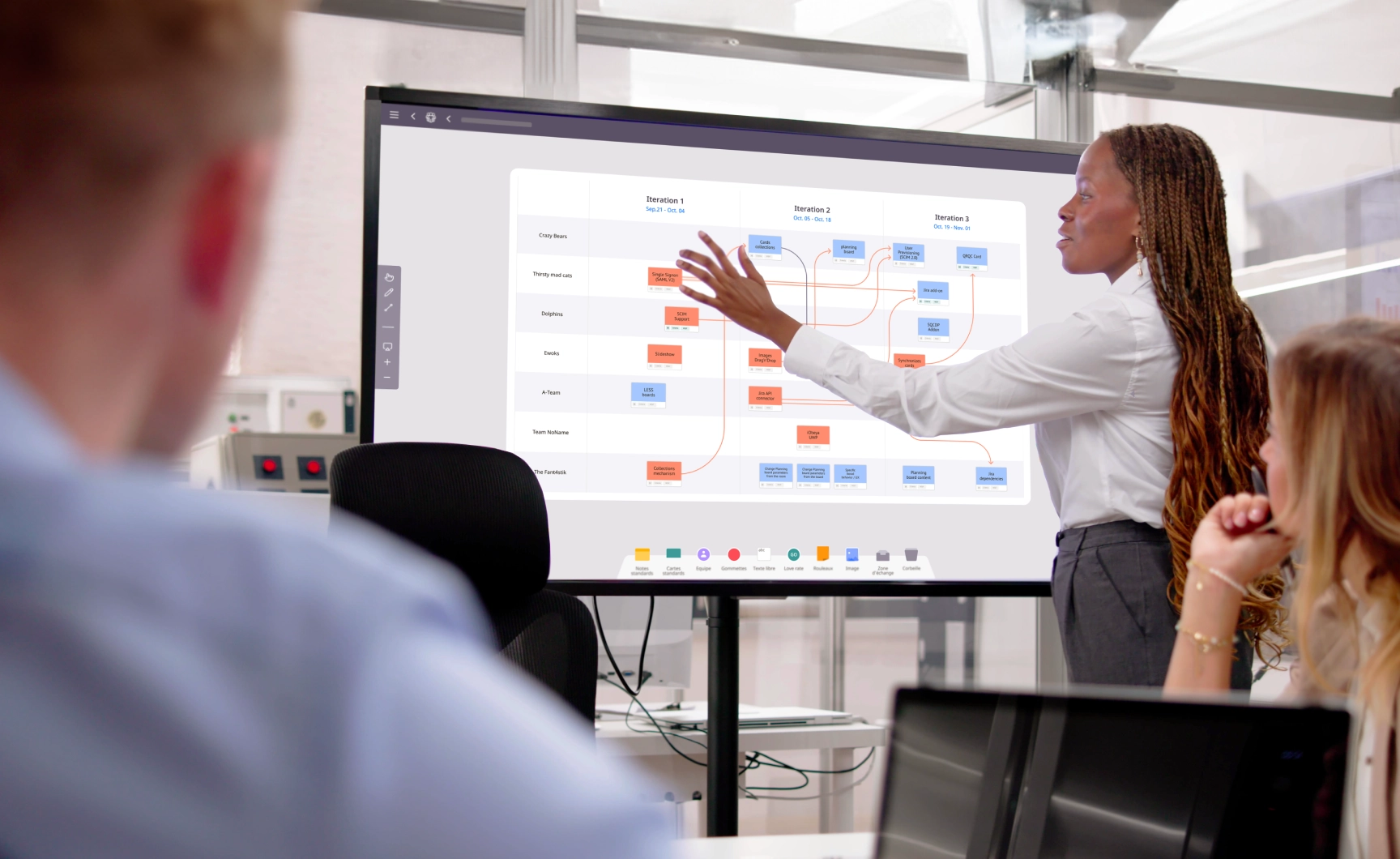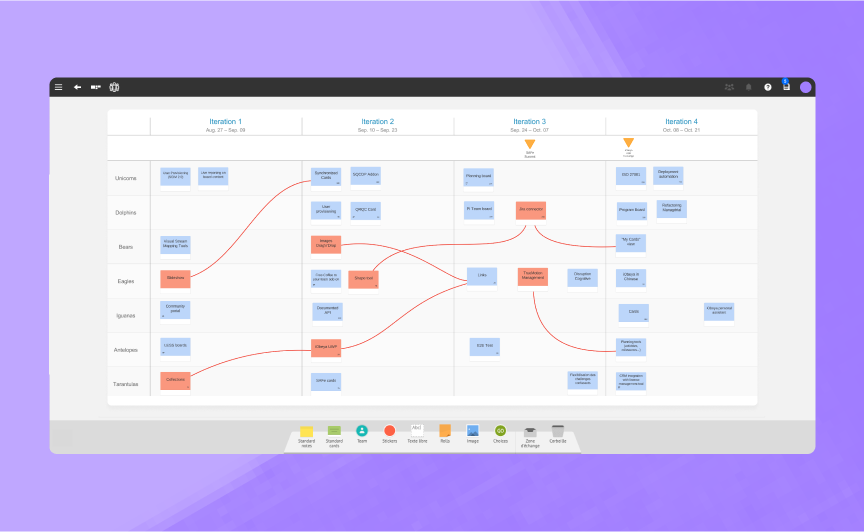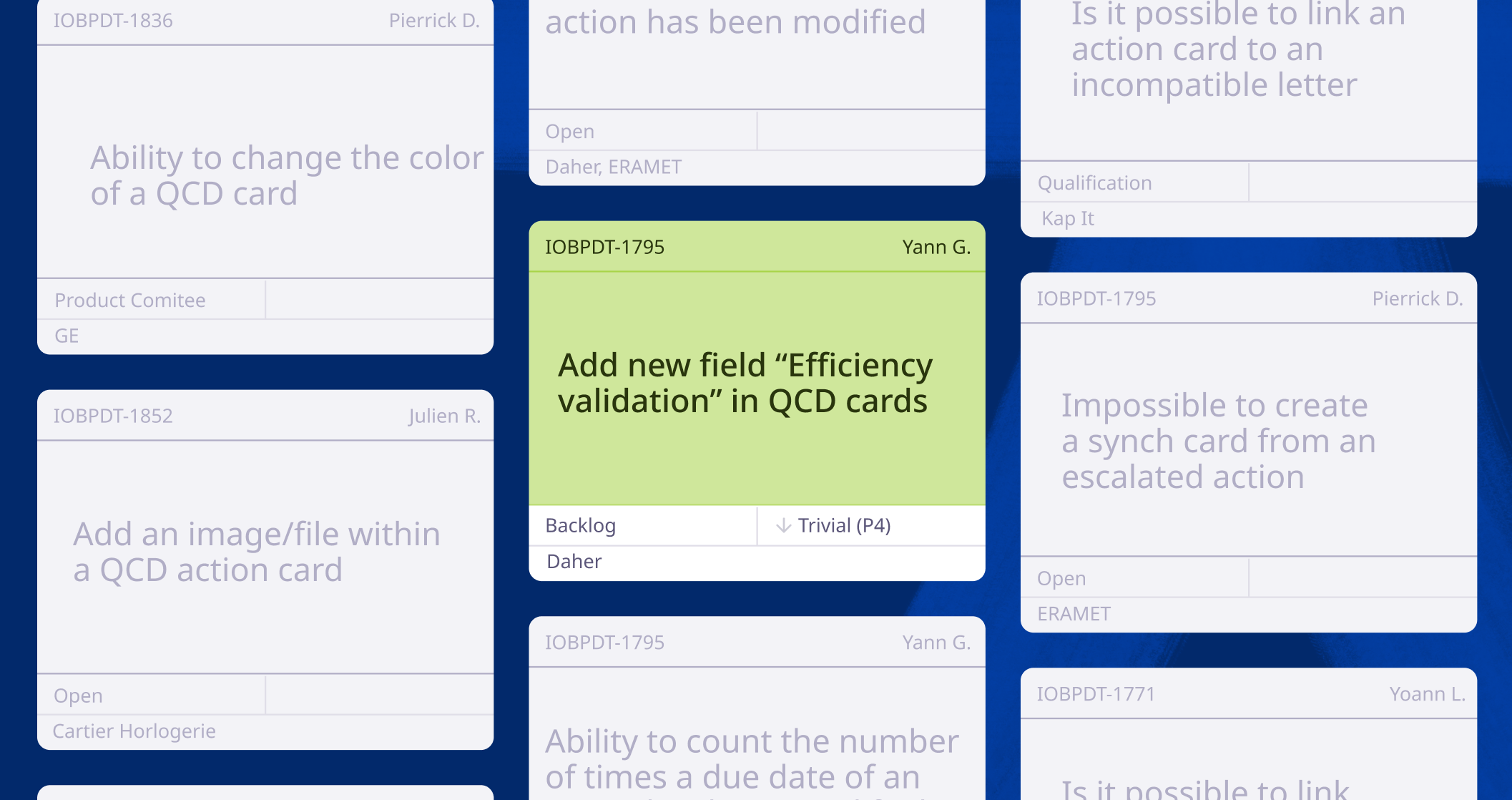Hey, let’s start your
iObeya journey!
Here in iObeya, we built a SAFe®️ organization (with several hacks and not all the pieces of the lovely & famous chart) so we are obviously structured in Agile Teams. And as everyone may know, one of the minimal routines every Agile Team must respect is the ”Daily Meeting“ ; or the ”Daily Scrum”, or the “Stand-up meeting”… And in ours, because many of the team members are remotely located, sitting at their own desk in front of their laptop, it should rather be called a “Sit-down” meeting! But the name doesn’t mean anything for me, the ritual/participation/punctuality are the most important things.
Of course, we “eat our own dog food” so almost everything in our company is done thanks to iObeya; and not only because we want to, because we absolutely need it and love it!
(Learn more about digitalizing Agile practices)
Now let’s go back to our “Visual Managed Meeting” and how we, my team, decided to manage it.
A Flexible and Collaborative "Daily Meeting" for our Organization
It is adaptable, not scheduled every day at the same time. Each day of the week has its own constraints, teammates can have other meetings, so we have to be flexible. But there’s one rule: the time slot is set before noon ; because we want to keep the Scrum philosophy and because some of us work with a 6 or 7-hours time-shift, so noon is already the end of the day for them… Oh, yes, I didn’t describe the team!
- 11 members
- Up to 6 different locations from 3 countries
- Multiple skills: quality, ux/iu, developer, product owner & product manager
- PM is present every two weeks but the whole rest of the team always “have to” be there, no distinction (ok, exception may happen, most of the time for the PO O:) )
For now, this team is mostly dedicated to the Lean manufacturing solution. Our daily meeting is pragmatic, not timed up-to-the-minute. Because we allow ourselves to bring together all the skills of the project, we do not want to reduce the daily as a technical review only with developers. Everyone is (or can be) impacted (or, at least, is interested) by the actions of others. Everyone speaks, shares.
From the team point of view, these minutes may be the only time the entire tribe is gathered.
For some members, it can be the only time when they will talk to all others, be able to share news, feelings, problems, blocking situations that can impact others, etc. We all have fantastic remote communication tools available all day long but let’s be honest, they cannot completely fill the gap with this daily-face-to-face-human-sharing-moment-ritual.
So yes, our daily meetings take more than 15 minutes, rather 20, sometimes 25 (meeting starts with 1 or 2 minutes delay, each member barely speaks during 2 minutes, nothing crazy), 30 is a very high maximum… but it can happen. And everyone tries to be disciplined and feel free to cut a fellow short, in case he digs deeper into the limbo of his explanations… “hey guys, meet-after??”
Our Board, our main meeting tool
Just a few words on the “place” where we “are” during this “Visual Managed Meeting”. Our board is displayed in a room (an Obeya) that can contain a lot of other visual information depending on its purpose (an obeya for a product launch, a project follow-up, a personal room or a public room sharing global information, a design thinking session, a PI Planning management… this is one of the key strength of iObeya). Here, the room containing the meeting board is in one of our many R&D’s and is dedicated to the global follow-up or our industry 4.0 products. Anyone can find in it many visual boards with a lot of information, ours is called the “Team Kanban”.
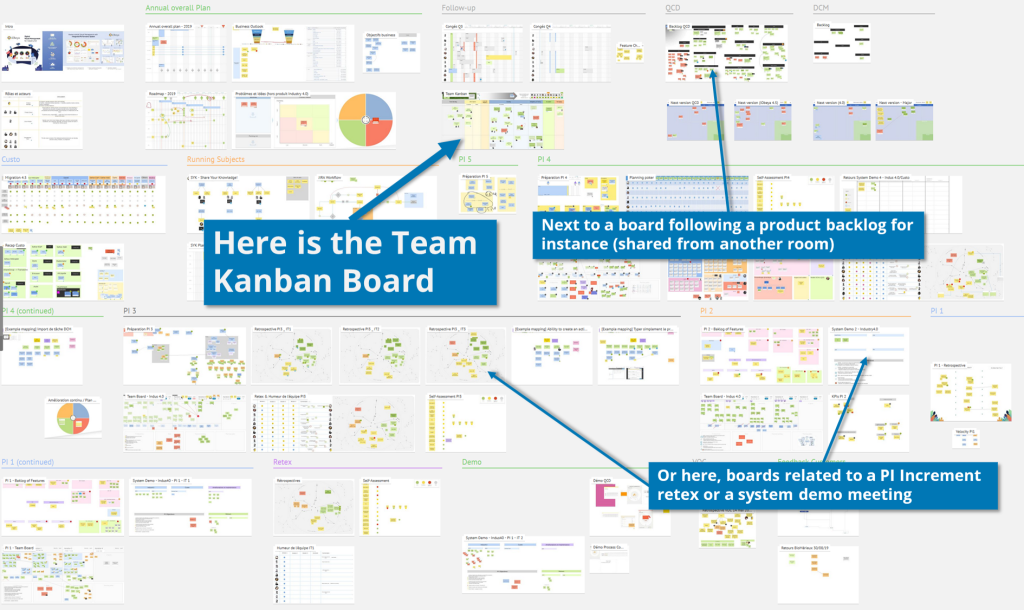
We do use a video conferencing tool to be all together in the same “place”. So our screens are split into two parts / two tabs of a web browser: left side, the biggest content, is for the boards we all see, right side is for the conference call. Everybody is (should be) available through their webcam. Of course, at least each location is logged in iObeya, connected into the room (no need to share the screen: better visibility and less bandwidth consumption). The idea is really to be gathered in the same place and increase our efficiency by seeing and sharing the same information at the same time.
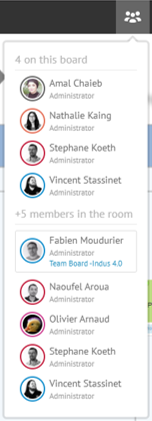
Members working in our offices, in the same physical meeting rooms, use a large touch device ; others interact directly with their laptops. Here is what we all see on our screens:
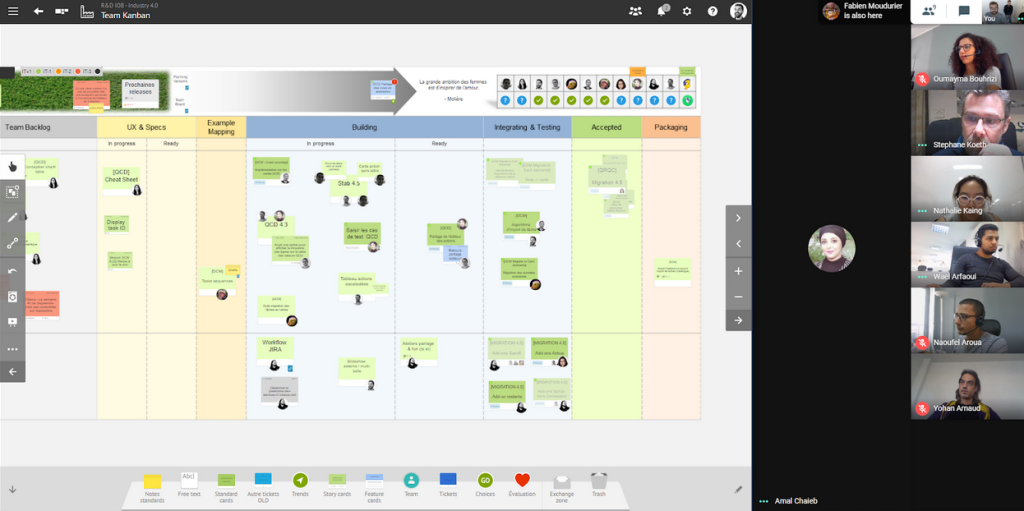
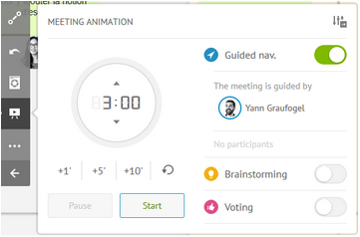
One last little (and important) thing: depending on the situation, we use the guided animation mode embedded in the solution. So the speakers take turns to synchronize their display or to guide everybody to another board if they need to share detailed information linked to a topic. But it is a whole topic about ways of working through visual management that can be described in a dedicated post.

That was a quick overview about our Daily Meeting management ; details regarding the structure and content of the board will be provided in the next article (11 members, 6 locations, 1 daily meeting (Part 2) is available now).
Get in touch with iObeya if this is something you would like to explore and implement in your enterprise.


